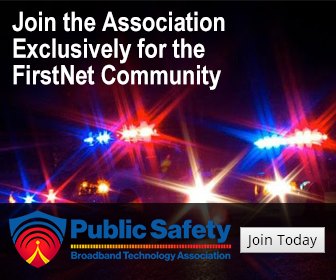Comm Center News
Dickson mayor recognizes dispatchers for Public Safety Telecommunicators Week (TN)
Dickson Mayor Don L. Weiss Jr. issued a proclamation recognizing the employees of the city’s Emergency Communications Department for National Public Safety Telecommunicators Week April 14-20.
Former Salem 911 dispatcher who won settlement against city for not accommodating her as … (OR)
Chelsey Hardy, the former emergency dispatcher who sued the city of Salem for retaliation, said she’s grateful for a six-figure settlement, but said it’s not enough to compensate her for all she lost – a career, a sense of identity and purpose. As others pulled out of...
Plans Being Developed For New Emergency Communication Options On Cape Cod (MA)
HYANNIS – Efforts are continuing to enhance first responder communications on Cape Cod. The Sandwich Select Board recently approved a plan to pursue a dispatch center agreement with Barnstable and Yarmouth. Barnstable County Sheriff Donna Buckley says these are...
Cuyahoga County gets federal funding for upgrades to 911 system (OH)
Cuyahoga County is working on a 911 system upgrade that will help dispatchers find a caller’s location more precisely. President Joe Biden signed a spending bill last month that included $2 million in funding for Cuyahoga County’s 911 system upgrade. But changes...
Berea takes step toward 911/EMA Transition (KY)
The Berea City Council adopted a resolution Tuesday authorizing an interlocal agreement in which Berea and Richmond will give the county authority to operate the 911 emergency communications center and the Emergency Management Agency. The measure also authorizes the...
DeKalb County CEO appoints Carina Swain as E-911 director (GA)
DEKALB COUNTY, Ga. — DeKalb County government CEO Michael Thurmond appointed a new E-911 director for the county. On Thursday, county officials announced Carina Swain would be stepping into the new role as DeKalb’s E-911 director after most recently working as a shift...
Celebrating the heroes who answer the call (FL)
Every year, during the second week of April, we honor the unseen heroes on the other side of the phone line. National Public Safety Telecommunicators Week is an opportunity to recognize our committed Communications Officers for their tireless dedication to public...
Oregon dispatcher whose boss wouldn’t move test so she could attend trial of man accused … (OR)
Salem emergency dispatch managers will undergo training on victims’ rights as part of a $325,000 settlement with a former dispatcher who alleged her bosses failed to reschedule a job promotion exam that fell on the day she was to attend a criminal trial of a man...
Cherokee E-911 Named Call Center of the Year (GA)
The 9-1-1 team was bestowed the award March 27 during the Georgia Emergency Communications Conference in Athens. READ FULL ARTICLE
Crawford County begins transition process for consolidated 911 dispatch center (AR)
VAN BUREN, Ark. (KNWA/KFTA) — Crawford County will change how it will receive 911 calls after it consolidates three dispatch locations across the county into one Van Buren location.
Riley County receives state communication equipment as they wait for new parts to repair … (KS)
TOPEKA, Kan. (WIBW) - Riley County officials say their public safety agencies received state communication equipment as they await new parts to repair their own.
CFB Denmark Tests LTE for Emergency Communications
Broadband | 2024-03-11
The Centre for Emergency Communication of the National Police, Denmark (CFB), together with the Fire services for the greater Copenhagen region has tested LTE radios for emergency communications.
In order to learn more about the possibilities of radio communication over 4G/LTE, the National Police’s Center for Emergency Communications (CFB) and the Capital’s Emergency Services under the auspices of the FREBI project have carried out a series of tests with a view to clarifying how the coverage is in larger buildings and underground facilities, where challenges are most often experienced with coverage on the emergency services’ SINE radios.
While the SINE radio network is based on Tetra technology, which is suitable for voice communication (mission critical communications), radio communication over 4G/LTE is a wireless and efficient way to transmit large amounts of data in areas where there is LTE coverage. Radios that are connected to an LTE network can communicate by sending and receiving data via radio signals, which makes it possible to create video streaming and share images – for example from an accident scene to the control centre.
Promising results with LTE
In the test in the capital, eight LTE radios were used, which the crew at Hovedstadens Firestation and Fælledvejens Firestation, respectively, were subsequently instructed to use, if the effort/exercise allowed it.
The result of the test shows that the users were very satisfied with the LTE radios and experienced good and efficient communication via the LTE network. The experience was particularly positive when the LTE radio was used indoors and in basements. Since broadband/LTE has been installed in virtually all buildings, the emergency services generally experienced a good LTE signal in places where there might otherwise be challenges with the signal on the SINE radio.
As with all studies, however, there are a number of uncertainties, and some caution should therefore be exercised in relation to broader generalizations. In order to extend the conclusion to more general assumptions, more tests covering more areas will be needed.
More activities on the way
In the coming years, CFB will launch several tests and pilot projects, which will, for example, investigate the possibilities in relation to the establishment of private networks and temporary coverage solutions for the communications of the emergency services.
In addition, as part of the new SINE contract, a new functionality will be implemented which enables the latest SINE radios to automatically switch to broadband in areas where SINE coverage is poor.
Dispatchers reflect after massive wildfire outbreak (VA)
HARRISONBURG, Va. (WHSV) - While firefighters were out maintaining and attempting to control fires, dispatchers still had to answer every call that was going through 911. Not only are they expected to handle the 911 calls that were made, but they also had to manage...
911, can I have access to the camera on your phone? – Police1
So, what can we expect for the emergency dispatch system’s continued development? Its next evolution will be the ability to connect via FaceTime and similar social media live video feeds. Callers will soon be able to inform dispatch centers by giving dispatchers...
911 dispatchers working from home: Could it come to the Triangle? (NC)
More 911 dispatchers are working remotely from home. In an unassuming co-working space in Person County, Conrad Shadel is answering 911 calls and dispatching police, fire and EMS -- thousands of miles away. READ FULL ARTICLE
Rockland County Boasts New Alternate Emergency Communications Center (NY)
Rockland County's Communications Division initiated a “soft launch” of its new Alternate Emergency Communications Center (AECC) at the New City campus of the Rockland County Sheriff's Office on Wednesday morning.
Leaders outline struggles, benefits associated with ‘journey’ to NG911
ORLANDO—Migrating public-safety answering points (PSAPs) to an IP-based next-generation 911 (NG911) platform is challenging and can include setbacks, leaders of two high-profile NG911 deployment efforts in the states of California and Texas said during an IWCE 2024...
Rhode Island Governor Dan McKee Announces Recipients of Public Safety Infrastructure Grants
In a significant move to bolster public safety infrastructure across Rhode Island, Governor Dan McKee unveiled today the recipients of a matching grant program aimed at financing crucial facility projects. The initiative, titled the Municipal Public Safety...
Greeley Police Department closer to building real-time information center as technology (CO)
A $2.4 million police initiative could change the nature of 911 responses in Greeley as soon as this year. Greeley City Council this week gave first approval to appropriate public safety tax funds to build a real-time information center for the Greeley Police...
Madison County earmarked for $1.5 million in 911 radio system overhaul (NC)
MARSHALL - Madison County's 911 radio system overhaul project received some more good news earlier this month in a continued trend that has seen the county revitalize a system one local fire chief once called "about the sorriest in the nation."
Upcoming Webinar
4.9 GHz Band: Review of the FCC Order
On October 22, 2024, the Federal Communications Commission (Commission) released its Eighth Report and Order (Eighth R&O) regarding utilization of the 4940-4990 MHz (4.9 GHz) band that protects incumbent users as requested by us, the Public Safety Spectrum Alliance (PSSA). This Eighth R&O addresses a number of issues related to the use of this band by public safety. Please join us for a briefing on this order and how it impacts public safety.
This presentation will be led by Chief Jeff Johnson (ret) and Attorney Jason Karp, one of the nation’s leading experts in public safety spectrum regulations.
REGISTER
Subscribe to Comm Center News
Get the latest News, Articles, and Insights from AllThingsECC.com weekly in our newsletter.
Stay Up to Date With The Latest News & Updates
Share Your Story
Join our community to share your experience and connect and collaborate with colleagues.
Join Our Newsletter
Get the latest News, Articles, and Insights from AllThingsECC.com weekly in our newsletter.
Follow Us
Stay connected with the latestEmergency Communications News, Articles & Information.



